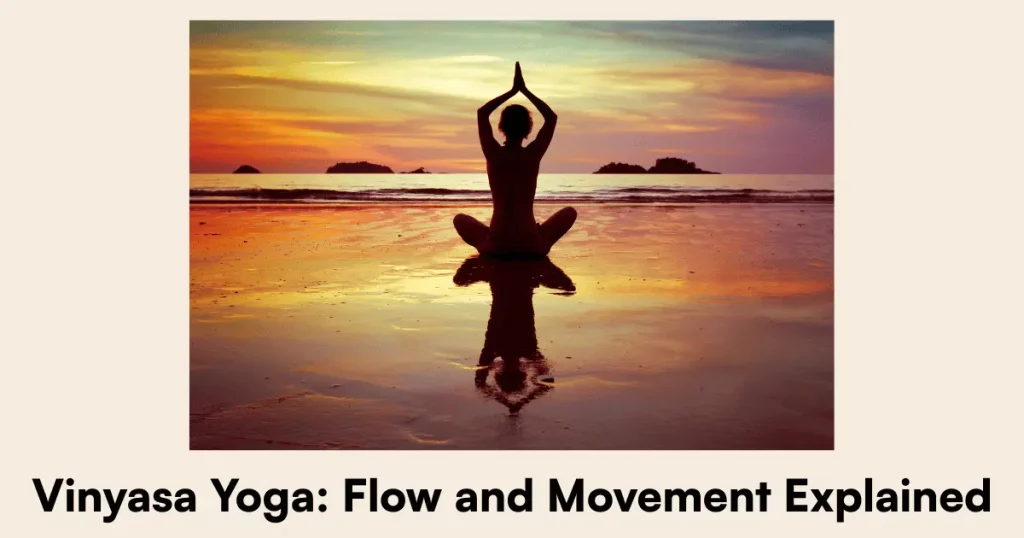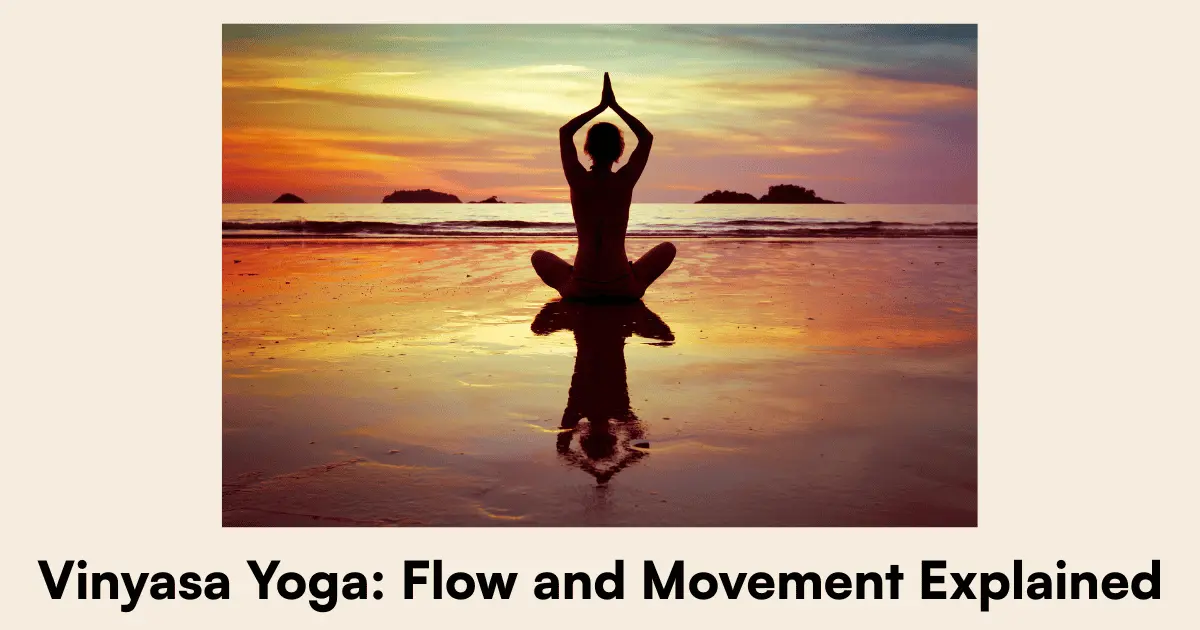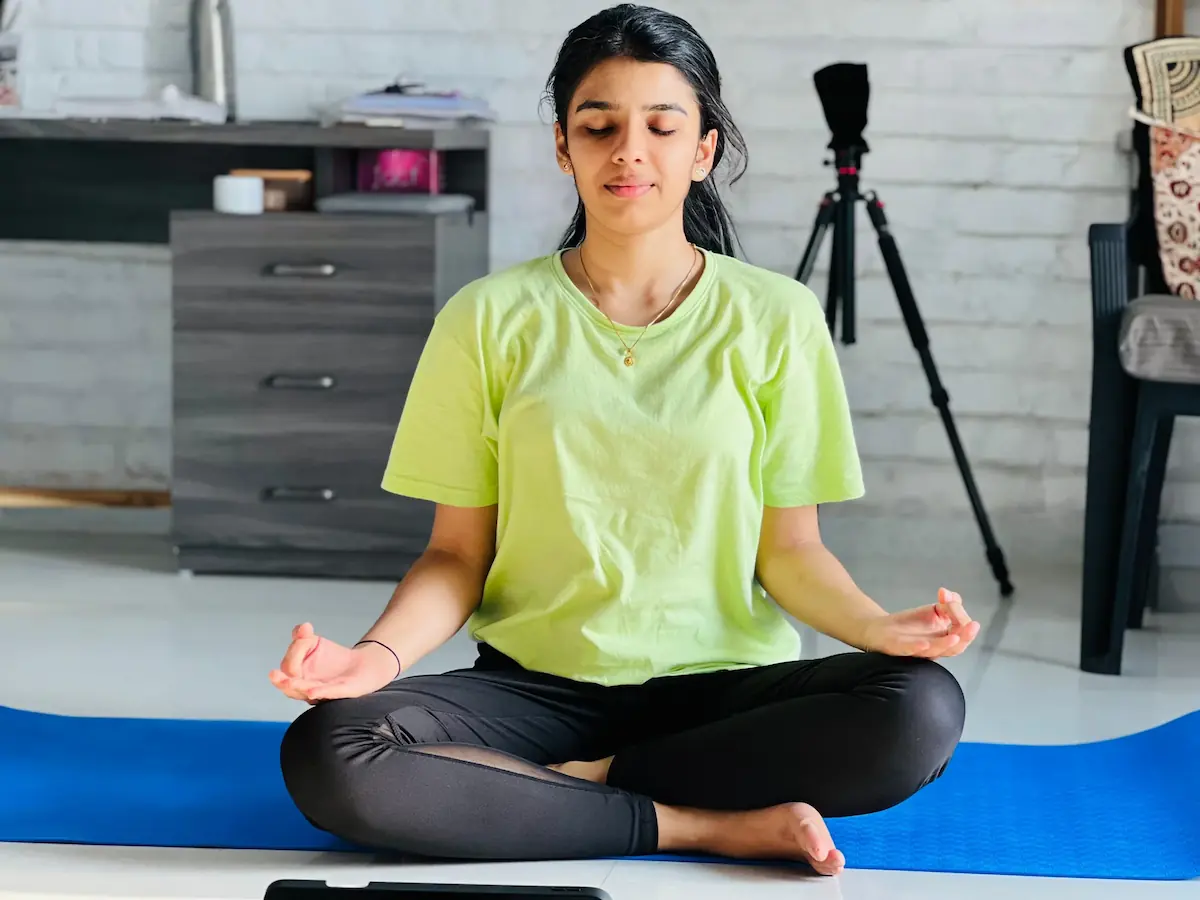Craving a yoga practice that feels like a dance? Vinyasa yoga, known as vinyasa flow, is your match—a dynamic style where each breath drives a fluid transition. This guide dives deep into vinyasa benefits, offers a detailed vinyasa yoga sequence with richly linked pose breakdowns, and explores who it suits.
We’ll also cover its history, advanced tips, and FAQs to help you master this flowing art. I remember we’ve chatted about yoga styles before, and vinyasa’s lively vibe often stands out—let’s explore it fully!
New to yoga? Build your foundation with our Essential Yoga Poses for Beginners.
What Is Vinyasa Yoga?

Vinyasa yoga, from the Sanskrit “vinyasa” meaning “to place in a special way,” is a vibrant vinyasa flow that ties every move to an inhale or exhale. Picture gliding from Plank to Upward Dog to Downward Dog, each step a breath-powered shift—like a dance with intention.
Originating from Ashtanga traditions, it was refined in the 20th century by T. Krishnamacharya, emphasizing breath as the guide. Unlike static holds, its sequences vary, lasting 60–75 minutes in energetic studios or homes with music. Its global appeal blends tradition with creativity—check out more in our Yoga Styles guide.
Key Features
- Pace: Moderate to fast—3–5 poses per minute.
- Focus: Breath sync, fluidity, and awareness.
- Setting: Lively studios or cozy home spaces with playlists.
- Roots: Evolved from Ashtanga’s structure into a freer flow.
Who Can Practice?
Vinyasa fits active folks, from beginners with tweaks to intermediates seeking challenge. It’s great for those familiar with basics, though patience helps as you grow.
The Evolution and Philosophy
Vinyasa traces back to Ashtanga’s disciplined sequences, shaped by Krishnamacharya’s students like Pattabhi Jois. Unlike Hatha’s stillness, it uses movement as meditation, aligning with yoga’s goal of body-mind unity. This flow reflects life’s ebb and flow, offering a practice that’s both workout and reflection. Its modern flair—music, varied poses—makes it accessible yet profound, a balance we’ve touched on in past yoga talks.
Vinyasa Benefits
Vinyasa’s vinyasa benefits are transformative. A 2022 Medicine & Science in Sports study notes 300–500 calories burned per hour, enhancing cardio. Rhythmic breathing sharpens focus, cutting stress by syncing mind and body—supported by a 2021 Journal of Exercise Psychology on endorphins. It strengthens arms and core with Chaturanga, while stretches boost flexibility. So, vinyasa benefits include fitness, clarity, and joy, adapting to your needs whether for energy or calm.
Deeper Perks
- Heart Health: Boosts circulation and stamina.
- Creativity: Unique flows spark mental agility.
- Joint Mobility: Gentle transitions ease stiffness.
- Resilience: Builds emotional strength over time.
Who Thrives?
Vinyasa suits fitness lovers, busy minds, or those moving from slower styles like Hatha. Athletes enjoy its intensity—see Yoga Styles for comparisons.
Sample Vinyasa Yoga Sequence with Detailed Poses
Here’s a 15-minute vinyasa yoga sequence for all levels. Flow with your breath, holding each pose for 3–5 breaths unless noted. Use a mat and adjust as needed.
Warm-Up: Cat-Cow Flow (5 breaths each)
- How: On all fours, inhale to arch your back (Cow), lifting chest and tailbone; exhale to round your spine (Cat), tucking chin and tailbone. Move smoothly.
- Benefit: Warms the spine, enhances breath awareness.
- Details: Keep wrists under shoulders, knees under hips. Feel the stretch from neck to lower back, syncing with slow breaths. Learn more with Essential Yoga Poses for Beginners and What Is Yoga?.
Sun Salutation A (3 rounds)
- Mountain Pose (Tadasana)
- How: Stand tall, feet together, arms by sides. Inhale, engage thighs, lift chest.
- Benefit: Grounds you, aligns posture.
- Details: Distribute weight evenly, imagine a string pulling you up. Hold 3 breaths to start. Explore further with Essential Yoga Poses for Beginners.
- Upward Salute (Urdhva Hastasana)
- How: Inhale, sweep arms overhead, palms touch, slight backbend.
- Benefit: Opens chest, stretches shoulders.
- Details: Keep legs firm, avoid over-arching—gaze up gently. Dive deeper with What Is Yoga? and Common Mistakes Beginners Make in Yoga.
- Forward Fold (Uttanasana)
- How: Exhale, hinge at hips, fold forward, hands to floor or shins.
- Benefit: Stretches hamstrings, calms mind.
- Details: Bend knees if tight, let head hang to release neck.
- Half Lift (Ardha Uttanasana)
- How: Inhale, lift torso halfway, flat back, hands on shins or thighs.
- Benefit: Strengthens back, lengthens spine.
- Details: Look forward, keep spine straight—avoid rounding shoulders.
- Plank Pose
- How: Exhale, step back, body straight, hands under shoulders, core tight.
- Benefit: Builds arm and core strength.
- Details: Align head with heels, don’t let hips sag—hold steady.
- Chaturanga Dandasana
- How: Exhale, lower halfway, elbows bent at 90°, body parallel to floor.
- Benefit: Tones arms, strengthens core.
- Details: Keep elbows close, lower slowly—drop knees if challenging.
- Upward-Facing Dog (Urdhva Mukha Svanasana)
- How: Inhale, roll over toes, lift chest, thighs off ground, gaze up.
- Benefit: Opens chest, strengthens back.
- Details: Press palms firmly, lift heart high—avoid neck strain.
- Downward-Facing Dog (Adho Mukha Svanasana)
- How: Exhale, lift hips back, form an inverted “V,” press heels down.
- Benefit: Stretches calves, strengthens shoulders.
- Details: Pedal feet to loosen hamstrings, hold 5 breaths.
Closing: Child’s Pose (5 breaths)
- How: Exhale, kneel, sit on heels, forehead to floor, arms forward or by sides.
- Benefit: Relaxes body, resets breath.
- Details: Spread knees wide if comfy, rest fully—feel the ground. Learn more with Essential Yoga Poses for Beginners and Yoga Styles.
How to Start Vinyasa Yoga
Diving into vinyasa flow is thrilling and doable! Start with 15–20 minutes at home on a non-slip mat in a clear, airy space. Follow a “Vinyasa Flow” video on YouTube (e.g., Yoga with Adriene) or join a class for hands-on cues. Sync breath with moves—inhale to rise, exhale to fold. Avoid wrist strain or overdoing it—check Common Mistakes Beginners Make in Yoga for guidance. Over weeks, vinyasa benefits like strength and focus will emerge.
Advanced Tips
- Gear: A grippy mat ($20–$40) and towel for sweat. Add blocks for support.
- Music: Use a “Yoga Flow” playlist—try Spotify’s options.
- Progression: Master 5 flows, add 2 weekly. Aim for a 60-minute class after a month.
- Breath Work: Try Ujjayi breath (soft throat sound) to deepen focus and rhythm.
FAQs About Vinyasa Yoga
Is Vinyasa Suitable for Beginners?
Yes, with adjustments! It’s livelier than Hatha but adaptable—see Yoga Styles for options.
How Long Should I Practice?
Start with 15–20 minutes daily, building to 60-minute classes weekly.
Can I Do Vinyasa With Injuries?
Yes, with a teacher’s input. Modify poses—skip deep twists if back’s sore. Check Yoga Styles for gentler choices.
What Sets Vinyasa Apart?
It’s flow-based, unlike Hatha’s holds or Ashtanga’s fixed series—explore in Yoga Styles.
Do I Need Prior Experience?
No! Begin slowly—vinyasa evolves with your practice.
Conclusion
Vinyasa yoga captures the essence of vinyasa flow, explaining what is vinyasa yoga through its dynamic, breath-driven motion. Its vinyasa benefits—fitness, focus, and joy—shine in a detailed vinyasa yoga sequence with enriched links. Ideal for active souls or creative minds, it’s a practice to embrace. So, flow today and feel the rhythm!
Which pose flows best for you? Share below or dive into What Is Yoga?.

